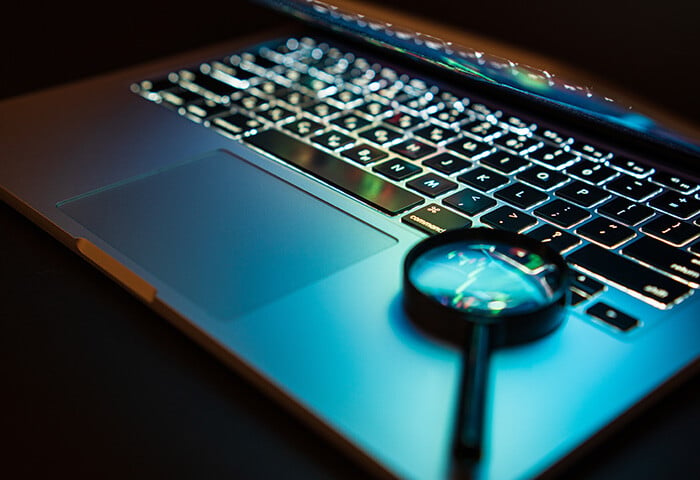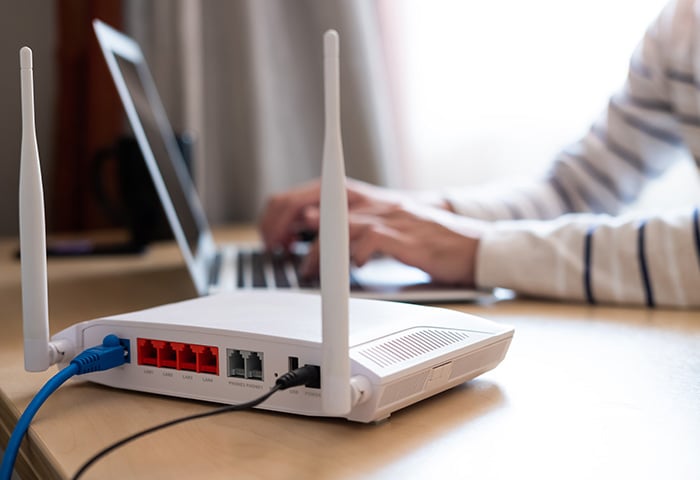What is fake news?
Fake news is misinformation presented as a genuine news story. The aim of fake news is to change the way people think about actual events, people, and facts. Many fake news stories quickly go viral due to how sensational they are.
It’s easy to cherry-pick a few facts from a story and construct an emotional narrative. Excited readers then share the post without double-checking the source. The creators of fake news pieces intentionally play up the emotional appeal of their stories to encourage impulsive sharing and discussion.
Fake news examples
You can learn to recognize fake news by familiarizing yourself with examples of fake news stories. Some of them are harmless, while others can be used to push destructive conspiracy theories.
Here are some common types of fake news stories so you can better spot them.
Deepfakes
The newest type of fake news, deepfakes superimpose somebody’s face or head onto another person’s body in full live-action video, making it possible to create a video of anyone doing or saying anything. Most deepfakes fall into the “uncanny valley,” a term that describes how digital videos (or robots) become deeply unsettling as they grow more realistic.
And as technology improves, there’s no telling how convincing deepfakes may become in a few years. So it’s crucial to critically evaluate everything you see on the internet.
Clickbait
Clickbait exists for one reason: to be clicked on. Clickbait will say and show anything to get you to click. Every website wants to encourage clicks, but clickbait does so through deception, sensationalism, or both.
%20-%20refresh/img_01.png?width=629&name=img_01.png) This man is actually a professional zoologist who’d been working with this lion for years. (Source: Twitter; or read about the real story here)
This man is actually a professional zoologist who’d been working with this lion for years. (Source: Twitter; or read about the real story here)
Clickbait articles can be used by hackers and in phishing attacks to trick you into visiting malicious websites that can infect your device with malware or collect your personal data.
It’s safer to avoid clickbait altogether, unless you’re protected by a powerful antivirus like AVG AntiVirus FREE.
Propaganda
Propaganda is where a writer strategically tries to convincingly frame a bad political argument. Since fake news is so easy to make and can be tricky to catch, propaganda like this has become a cornerstone of modern politics.
Propaganda may contain a fact or two, but these facts are merely an introduction to an emotional plea. A scientist makes an isolated observation, and the writer follows up by saying, “See? Case closed.” Readers will fall for the author’s confidence and share the article without a second thought.
Modern propaganda seeks to validate pre-existing beliefs and spur action from the people who already agree with it. This is known as confirmation bias — when we choose to consume information that confirms the beliefs we already hold.
To identify propaganda you need to understand your own biases and recognize when they’re being used against you. It’s easier to detect fake news when you’re open to new ideas.
Biased news
Some news sources have a clear ideological leaning. Political bias in news outlets is so common that it can be tracked and graphed.
Biased news and propaganda can distort facts, present information that reinforces false views, or provide speculative commentary. The distinction between propaganda and biased news comes down to how much misinformation is present and how heavily the writer’s personal opinions are baked into the article.
But commentary isn’t the only thing that can make news biased: phrasing and context can also warp how a real-life story is perceived. The fact-checking website Snopes flagged an example during Hurricane Katrina in which bias contributed to framing two very similar photos in radically different ways.
In one, a person carrying a bag while wading through flood water is described as having “looted” a grocery store. In the other, two people shown doing the same thing were said to have simply “found” food at a grocery store. Clearly, looting and finding each tell a very different story and lead readers to draw sharply different conclusions about what happened.
So what do you do when you encounter stories with this kind of framing?
Stick to reliable news sites. Trustworthy news sources usually provide a balanced account of the facts, especially when taken together. Even then, plenty of supposedly neutral, reliable sites may have highly biased writers on staff. So don’t let your guard down.
Be skeptical of what you see on social media. Popular tweets or threads can provide insight and show how others have developed their views, but avoid “echo chambers,” or groups with a predefined ideological leaning. Facebook groups are incredibly prone to the echo chamber effect.
Poor journalism
Sometimes, fake news is neither malicious nor even intentional — it’s just bad journalism. Writers can get their facts wrong, misquote people, or misinterpret data. Then, they can inadvertently draw conclusions based on that false information.
Here’s an example:
%20-%20refresh/img_03.png?width=350&name=img_03.png) Incorrect interpretations of data lead to bad conclusions. (Source: Twitter)
Incorrect interpretations of data lead to bad conclusions. (Source: Twitter)
That is technically true, but it’s incredibly misleading. While only 6% of the death certificates referenced in this tweet named COVID-19 as the cause of death, that’s because death certificates list the most immediate cause of death. In reality, all of those people died due to COVID-19 — if not directly from the disease, then from related complications.
The easiest way to spot poor journalism is to never rely on just one source. A badly written article can also be a sign that the website isn’t legitimate, which also means it could be filled with malware-laced ads called malvertising. (Of course, legitimate websites aren’t immune — plenty have also been hit by malvertising campaigns.)
If you visit a website with malicious ads, your device can get infected as soon as you land on the page. But you can avoid these attacks with AVG AntiVirus Free. The built-in Fake Website Shield prevents you from accidentally landing on fraudulent sites, while our Web Shield feature checks files for hidden malware before downloading them to your computer.
How to identify fake news
Learning how to spot fake news is all about developing good critical thinking skills.
Practice evaluating a story from multiple angles and you’ll quickly become adept at spotting fake news articles.
Once you get the hang of it, identifying fake news isn’t hard. Most of these tips require just a few minutes of effort. If you can do that, you won’t have any trouble learning how to avoid fake news.
Next time you see a suspicious news story, run it through the following tips from our fake news checklist:
Check the source
What website is the news story on? Fake news websites try to fool you by mimicking legitimate news sources. Click around the site and it should become clear if it's fake or reputable.
You can also check fake news by searching the name of the source plus the word “reliable.”
%20-%20refresh/img_04.png?width=863&name=img_04.png) A quick internet search shows that OANN has a far-right bias. (Source: Google)
A quick internet search shows that OANN has a far-right bias. (Source: Google)
You’ll get an idea of what other people have said about that source and learn about any biases it may have.
Check if anyone else is covering the story
Search for other articles on the same story. If all the links lead back to the same news source, you shouldn't believe it. It’s as simple as that.
Look beyond the headline
Read the article and get the full story. Some journalists “bury the lede” by placing a crucial piece of information later in the piece. Sometimes, one small fact can highlight how the article’s headline distorts the whole story.
Check out this British news report about an incident where Icelandic singer Bjork attacked a reporter. The top comment points out how the reporter waited until the end of the segment to contextualize the incident, making the story much more sensational.
%20-%20refresh/img_05.png?width=1000&name=img_05.png) A sensationalized headline can lead readers to misinterpret a story...
A sensationalized headline can lead readers to misinterpret a story...
%20-%20refresh/img_06.png?width=1054&name=img_06.png) ...unless the reader makes it far enough to find the proper context. (Source: YouTube)
...unless the reader makes it far enough to find the proper context. (Source: YouTube)
Research the author
An author’s body of work and social media accounts may reveal their biases and prejudices. Explore the writer’s online presence to assess whether the journalist has written the news story in good faith, or if it’s fake news.
Examine the supporting sources and data
Any article worth reading has lots of references. An article without citations should be seen as an opinion piece. If there are citations, take a look at where they lead. They may point to untrustworthy news websites.
Check the date of the article
A news item or video from months or years ago can pop up in discussions of current events, regardless of whether or not it’s still relevant. Older stories may still be unsettling, but they shouldn’t be used as evidence of a contemporary issue.
Find out if it's just a joke
The Onion and The Daily Mash are satirical news sites. Articles on these websites are frequently for real news stories, but all it takes is a quick glance at other articles on the site to learn that these websites are 100% satire.
%20-%20refresh/img_07.png?width=684&name=img_07.png) An obvious bit of satire (Source: The Onion)
An obvious bit of satire (Source: The Onion)
Follow your instincts
If something doesn't “sound” right, it probably isn't. Nobody had a head start in spotting fake news, and many of us still make mistakes. Be skeptical of online media. Headlines written for shock value will start to stick out like a sore thumb.
When did fake news start?
The term fake news has existed throughout the 20th century — but it really became part of the popular lexicon during the 2016 US Presidential Election.
Around that time, Buzzfeed found that false news stories on Facebook were getting more views than real ones. Hundreds of teenagers in Macedonia were writing sensational stories to earn ad revenue from Facebook. News outlets called these money-grabbing articles “fake news.”
For a brief period of time, that’s all they were: articles with outrageous headlines, created to get clicks. But soon, they would grow to become an influential force on global politics.
The rise of fake news
Things got out of hand when Donald Trump started using the phrase to describe anything he didn't like. His followers took this literally, believing that Trump was being persecuted by the political establishment and major news outlets.
Public trust in the media plummeted. Like a viral hashtag, #fakenews became too big to control. Now, the term is frequently used by politicians and reporters to describe articles written for political or financial gain.
Why does fake news go viral?
Fake news goes viral because people are naturally excited by sensational headlines. We like to see our beliefs confirmed, and we’ll express ourselves by sharing stories before verifying their veracity with a fake news check. When social media enters the picture, fake news stories go viral very quickly.
Many sources of fake news care only about how many clicks they get, and they’ll create stories designed to resonate with the beliefs and biases of their audience. While viral fake news often results in real-world consequences, the people behind it are usually thinking only about their wallets.
What are the main sources of fake news?
Fake news sites exist to generate ad revenue, and they are everywhere. These sites look like real ones, but much of the content is clickbait and propaganda. “Bot accounts” on social media platforms help spread these stories, while legitimizing their ideas through repetition. At the same time, well-respected media outlets are often accused of spreading fake political news by leaders and other people who don’t like the content of these outlets’ journalism.
While the creators of fake news may not be solely motivated by politics, fake news has flourished in today’s tense political climate. Always verify news stories before sharing them with friends or family.
Protect yourself against dangerous fake news websites
Unsafe websites that don’t respect the truth probably don’t respect your privacy, either. A site that resorts to shady tactics to make a buck won’t hesitate to steal your credit card and other personal information. These sites put ads on their pages that contain hidden code to download malware onto your computer — as if it were a key part of their business model.
Armed with these tips, you can avoid falling for fake news. But of course, we all make mistakes, which is why you should bolster your computer’s defenses with a good antivirus.
AVG AntiVirus FREE is designed by security experts to stay up-to-date with all the latest developments in internet security. So you can be sure it will alert you to any shadiness you may encounter on the internet. Try it for free today.
.png)
.png)

%20-%20refresh/img_01.png?width=629&name=img_01.png) This man is actually a professional zoologist who’d been working with this lion for years. (Source:
This man is actually a professional zoologist who’d been working with this lion for years. (Source: %20-%20refresh/img_03.png?width=350&name=img_03.png) Incorrect interpretations of data lead to bad conclusions. (Source: Twitter)
Incorrect interpretations of data lead to bad conclusions. (Source: Twitter)%20-%20refresh/img_04.png?width=863&name=img_04.png) A quick internet search shows that OANN has a far-right bias. (Source: Google)
A quick internet search shows that OANN has a far-right bias. (Source: Google)
%20-%20refresh/img_05.png?width=1000&name=img_05.png) A sensationalized headline can lead readers to misinterpret a story...
A sensationalized headline can lead readers to misinterpret a story...%20-%20refresh/img_06.png?width=1054&name=img_06.png) ...unless the reader makes it far enough to find the proper context. (Source: YouTube)
...unless the reader makes it far enough to find the proper context. (Source: YouTube)%20-%20refresh/img_07.png?width=684&name=img_07.png) An obvious bit of satire (Source: The Onion)
An obvious bit of satire (Source: The Onion)





%20-%20refresh/Signal-What-is-streaming-Thumb-refresh.jpg)







